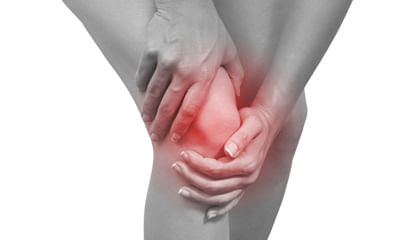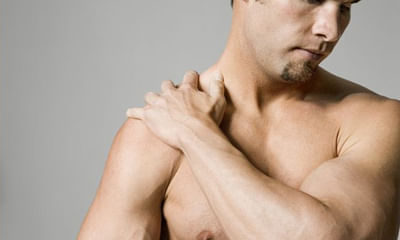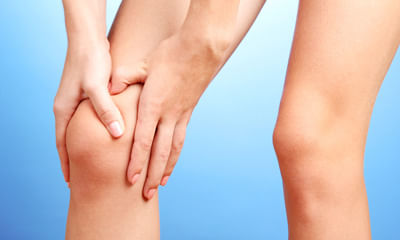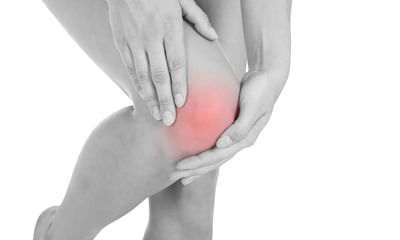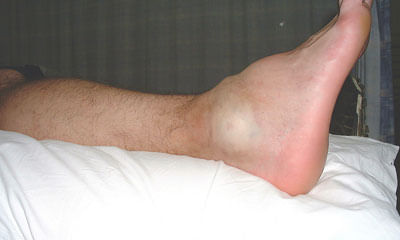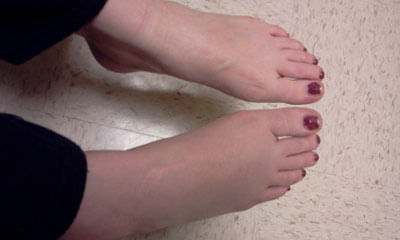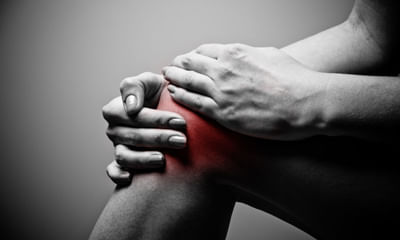Reduce Ankle Swelling After Surgery
Hello I had done my acl surgery in may 2020 ,but unfortunately in september my meniscus tear ,then I had done my meniscu ...
Ask Free Question
5 do’s & don’ts to reduce your knee pain. 1.Don’t take too much rest- not only your body muscles may become weaker even your joint’s pain may become worse. Take consultation from your physiotherapist to guide you with knee pain exercises which are safe for your knees & keep doing it. 2.Do exercise– exercises help in strengthening the muscles, increase flexibility & also support your knee. You can also do swimming, walking, elliptical machines & bicycles, etc. 3.Don’t avoid your weight– excess weight may increase the stress on your knee and if you have inflammatory arthritis then it may become worse. You don’t need to have ideal weight, you just need to start working to reduce the weight. 4.Rice - this process is good for joint pain caused due to minor injury or an arthritis. ••r (rest) – give some rest to your knees. •I (ice) – massage your knees with ice to reduce swelling. •c (compression)- start wearing compression bandage. •e (elevation)- keep your knee elevated. 5.Don’t wear bad shoes- we actively wear shoes in our daily life for hours without noticing how it can affect your knees badly. So, if you are facing knee pain, then check your shoes first. Is it giving you good comfort? If not then change it urgently. The importance of buying braces and splints from us – orthopaedic support braces we suggest you to wear knee brace which is available at our clinic. If you want you can buy from us, if you are far away from chennai we can send you by courier. The reason why we are conveying you to buy from us is we can demonstrate over the videocall (using whatsapp) and also we can monitor you throughout when to wear it and how long to wear it. And also if you find any difficulty wearing the brace you can also revert back to us for few more suggestions and we can propose you good solution how to go about it. Resisted terminal knee extension: make a loop with a piece of elastic tubing by tying a knot in both ends. Close the knot in a door at knee height. Step into the loop with your injured leg so the tubing is around the back of your knee. Lift the other foot off the ground and hold onto a chair for balance, if needed. Bend the knee with tubing about 45 degrees. Slowly straighten your leg, keeping your thigh muscle tight as you do this. Repeat 15 times. Do 2 sets of 15. If you need an easier way to do this, stand on both legs for better support while you do the exercise. Standing calf stretch: stand facing a wall with your hands on the wall at about eye level. Keep as arthritis is very common that you get generally bilaterally. Ice therapy would definitely help to reduce the inflammation. We also advise you to use knee cap which would help to prevent the knee from damaging further and also to maintain the quadriceps muscle tone 1. Heel and calf stretch to do this stretch: 1.Stand facing a wall. 2.Place your hands on the wall and move one foot back as far as you can comfortably. Toes on both feet should be facing forward, heels flat, with a slight bend in your knees. 3.Lean into the stretch and hold for 30 seconds. You should feel the stretch in your back leg. 4.Change legs and repeat. 5.Do this stretch twice for both legs. 2. Quadriceps stretch to do this stretch: 1.Stand next to a wall or use a chair for support. Your feet should be shoulder-width apart. 2.Bend one knee so your foot goes up toward your glutes. 3.Grab your ankle and gently pull it toward your glutes as far as you can comfortably. 4.Hold for 30 seconds. 5.Return to the starting position and change legs. 6.Repeat 2 times on each side. Hamstring stretch •take a break from strenuous activities to allow the injury to heal. •use a cane or crutches to avoiding putting your full weight on your injured leg. •apply ice packs several times a day to relieve pain and reduce swelling. •wrap the injured area with a compression bandage or wear compression shorts to minimize swelling. •rest with your leg elevated above the level of your heart, if possible, to improve drainage and minimize swelling. To do this stretch: to do this stretch: 1.For this stretch, you can use a mat to add cushioning under your back. 2.Lie down on the floor or mat and straighten both legs. Or, if it’s more comfortable, you can bend both knees with your feet flat on the floor. 3.Lift one leg off the floor. 4.Place your hands behind your thigh, but below the knee, and gently pull your knee toward your chest until you feel a slight stretch. This shouldn’t be painful. 5.Hold for 30 seconds. 6.Lower and change legs. 7.Repeat 2 times on each side. Strengthening exercises 5.Half squat to do this exercise: 1.Get into a standing squat position with your feet shoulder-width apart. Place your hands on your hips or out in front of you for balance. 2.Looking straight ahead, slowly squat down about 10 inches. This is the halfway point to a full squat. 3.Pause for a few seconds, then stand up by pushing through your heels. 4.Do 2 to 3 sets of 10 repetitions. 5. Calf raises to do this exercise: 1.Stand with your feet shoulder-width apart. Position yourself next to a wall or hold on to the back of a chair for support. 2.Lift both your heels off the ground so that you’re standing on the balls of your feet. 3.Slowly lower your heels to the starting position. Control is important with this exercise for strengthening your calf muscles. 4.Do 2 to 3 sets of 10 repetitions. 6. Hamstring curl 7. Leg extensions to do this exercise: 1.Sit up tall in a chair. 2.Put your feet flat on the floor, hip-width apart. 3.Look straight ahead, contract your thigh muscles, and extend one leg as high as possible without raising your buttocks off the chair. 4.Pause, then lower to the starting position. 5.Do 2 to 3 sets of 10 repetitions for each leg. 8. Straight leg raises to do this exercise: 1.For this exercise, you can use a mat to add cushioning under your back. 2.Lie down on the floor with one leg bent and one leg straight out in front of you. 3.Contract the quadricep of your straight leg and slowly raise it up off the floor until it’s the same height as your bent knee. 4.Pause at the top for 5 seconds, then lower to the starting position 5.Do 2 to 3 sets of 10 repetitions for each leg. 9. Side leg raises to do this exercise: 1.Lie on your side with your legs stacked on top of each other. Cradle your head in your hand, and place your other hand on the floor in front of you. 2.Raise your top leg as high as you comfortably can. You should feel this on the side of your hips. 3.Pause briefly at the top, then lower your leg. 4.Do 2 to 3 sets of 10 repetitions for each leg. 10. Prone leg raises to do this exercise: 1.For this exercise, you can use a mat to add cushioning beneath you. 2.Lie on your stomach with your legs straight out behind you. You can let your head rest on your arms. 3.Engage your glute and hamstring muscles in your left leg and lift your leg as high as you comfortably can without causing pain. Be sure to keep your pelvic bones on the floor throughout this exercise. 4.Hold your leg in the lifted position for 5 seconds. 5.Lower your leg, rest for 2 seconds, then repeat. 6.Do 2 to 3 sets of 10 repetitions for each leg.
I suffered a left ankle 2 grade ligament injury last year in june. And then I consulted a no of doctors and taken a numb ...
Ask Free Question
Yes, there are chances for ankle sprain to reoccur. They must be dealt with extreme care. Full rehabilitation is mandatory before you go to your normal activity. If you can send me the the reports I will give you the proper treatment plan. Regards.
I am 22 year old & I have surgery in spinal cord in 2011 after that situation my left leg has not show proper movement b ...
Ask Free Question
Do contrast bath ie. Take two tubs in one you can fill hot water (ie. Bearable heat) to immerse the feet in the tub and you will have good effect ie. Warmth effect. Further to that wipe with towel and immerse the feet in the cold water (ie. Ice water bath) which will help you to reduce the inflammation. Once this is done you can do some ankle movements to both the feet which will help you to boost and improve the blood circulation. As I said over the phone please use anklet which I have already sent by whats app and you can use mcr chappals which will help you to reduce the weight falling on the injured front portion of the foot. If you have the habit of using shoes then you can keep removable insoles which can be used inside the shoes and that acts like a shock absorber and which will also help to reduce and prevent the weight falling on the injured foot. This is the way to reduce the inflammation through home remedy. If the pain persists say for example after doing for 5-7 days then you have to consult physiotherapist where they will treat you with infra red radiation. But this is quite a rare treatment, if in case it is not available, let me know we can send it to you by courier. It is quite expensive but you will feel good results with that. This will help you to reduce the inflammation in the bone ie. Which is caused by the table which fell on your foot. You can thrombophob ointment to reduce the contusion and also to loosen and break the blood clot which is there in the front portion of the foot. It will also help you to change the skin colour. If the pain is too much then you can take ultracet tablet every day in the night. Keep two pillows under the ankle while sleeping on the bed which will help you to reduce the swelling. Hope you recover with this. And also please share your feed back if you become better. If you do not become better too pls let us know so that we can give some alternate solution. Please send your address so that we can send the products ie. Anklet to use it in the ankle / foot, mcr chappals for your size and also the removable foot insole.
Hi I had a knee surgery 3 months back. Where it was a fracture in the knee. I am facing swelling over the knee and ankle ...
Ask Free Question
This may be due to injury or increased uric acid level, you have to do proper homoeopathic treatment to cure your problem.
Swelling in ankle after plaster cast removal. Is it OK or may have some problems. ...
Ask Free Question
It is normal to have swelling for a few weeks. It will gradually subside when the tissues heal. This happens due to the release of pressure on the tissues constrained by the cast. To reduce the swelling, elevate the limb and apply ice to the affected area.
My husband got lump removed from leg 4 days back, today he got swelling near ankle, is it healing or increasing, any pre ...
Ask Free Question
It is common to have local swelling after any surgery. He should keep his affected foot elevated as much as is possible. In the morning when swelling is minimal, he can use a graduated compression soft roll with elaso crepe bandage toes to knees to avoid swelling, for 3 to 4 weeks or so. The bandage should be tight at the toes and slowly reducing compression as it is wound up to the knee.
I am 28 years old ,suffering from varicocele veins past 2 months, I go through scanning report says varicocele, doctor g ...
Ask Free Question
1.Varicose veins are swollen, dilated and tortuous veins under the skin particularly the calf muscle 2. It occurs due to a defect in the valve mechanism of deep veins of leg resulting in stagnation of blood in the veins. 3.It affects mostly women 4. It occurs due to obesity, during pregnancy, aged people and sometimes it runs in family Symptoms 1.Many patients are asymptomatic excepting facing cosmetic embarrassment due to the dilated and swollen veins. 2.Some patients have burning, throbbing,aching, heavy filling, cramp, swelling, discomfort in leg in leg. Pain worsened after prolonged sitting/standing 3.Few patient may develop itching around vein, Eczematous rashes or ulcer near the ankle. Prevention If you are having varicose veins 1. Do regular exercise, reduce weight if over weight, 2.Avoid tight cothing, 3.Avoid prolonged standing/sitting 3. Keep the leg elevated while sleeping, sitting 4.consult surgeon for further advice Treatment 1.Compression stocking If no relief 2.sclerotherapy, 3.Laser surgery or vein stripping. 4. Consult a good surgeon for treatment.
I am suffering from varicose vein. 20 years back I had D.V.T. And my leg became larger than normal from calf area. My pr ...
Ask Free Question
1.Varicose veins are swollen, dilated and tortuous veins under the skin particularly the calf muscle 2. It occurs due to a defect in the valve mechanism of deep veins of leg resulting in stagnation of blood in the veins. 3.It affects mostly women 4. It occurs due to obesity, during pregnancy, aged people and sometimes it runs in family Symptoms 1.Many patients are asymptomatic excepting facing cosmetic embarrassment due to the dilated and swollen veins. 2.Some patients have burning, throbbing,aching, heavy filling, cramp, swelling, discomfort in leg in leg. Pain worsened after prolonged sitting/standing 3.Few patient may develop itching around vein, Eczematous rashes or ulcer near the ankle. Prevention If you are having varicose veins 1. Do regular exercise, reduce weight if over weight, 2.Avoid tight cothing, 3.Avoid prolonged standing/sitting 3. Keep the leg elevated while sleeping, sitting 4.consult surgeon for further advice Treatment 1.Compression stocking If no relief 2.sclerotherapy, 3.Laser surgery or vein stripping. 4. Consult a good surgeon for treatment.
My mother having varicose vain in leg she having lot of pain in leg. Pls suggest best treatment. ...
Ask Free Question
Sclerosing injection will cure varicose veins. Varicose veins are generally benign. The cause of this condition is not known. For many people, there are no symptoms and varicose veins are simply a cosmetic concern. In some cases, they cause aching pain and discomfort or signal an underlying circulatory problem. Treatment involves compression stockings, exercise or procedures to close or remove the veins.
I have an complete ACL tear on my left leg. Is it surgery is the way to go or else rehabilitation will be the best since ...
Ask Free Question
This injury is a total disruption of the most important stabilizing ligament in the knee. The anterior cruciate ligament is located centrally within the knee, behind the kneecap, making it difficult for the to specifically localize the injury. - this injury occurs when there twisting of knee, i.e while playing sports Treatment usually involves: 1 Ice- to reduce swelling or you can also do contrast bath 2 elevation by applying 2 pillows below your ankle 3 compression by application of bandage to control swelling. - Walking (weight-bearing) is preferable if muscular control of the injured leg is adequate. - Knee straightening (extension) and bending (flexion) are encouraged by gentle stretching, isometrics of quads (withyour knee straight and back supported, keep towel roll beneath your knee joint abd you have press that towel till you count 30 ,do 10 repeations for 3 times per day )or pool therapy. Arthroscopic surgery should be undertaken in young, active patients because the ACL will not heal unless surgically operated. This patient group should avoid aggressive sports in the future. - If the shock-absorbing cartilages (menisci) are torn extensively, surgery may be required even in less active patients. Precautions: 1 prevent excessive swelling in your knee, calf and ankle regions by conscientious elevation and frequent muscle contractions. In cases where surgical treatment is necessary, make sure that early knee stiffness is improving prior to surgery. 120 degrees of flexion is recommended prior to surgery. So there is need for physiotherapy sessions before surgery to increase your joint range and muscle strength to avoid stiffness of joint. 2Complete rupture of the ACL can also, affect knee function for a lifetime and can lead to osteoarthritis if not treated correctly. 3 Do not participate in jumping, cutting or twisting sports until you have recovered fully from you injury, and the doctor has cleared you to do so. Recovery.

